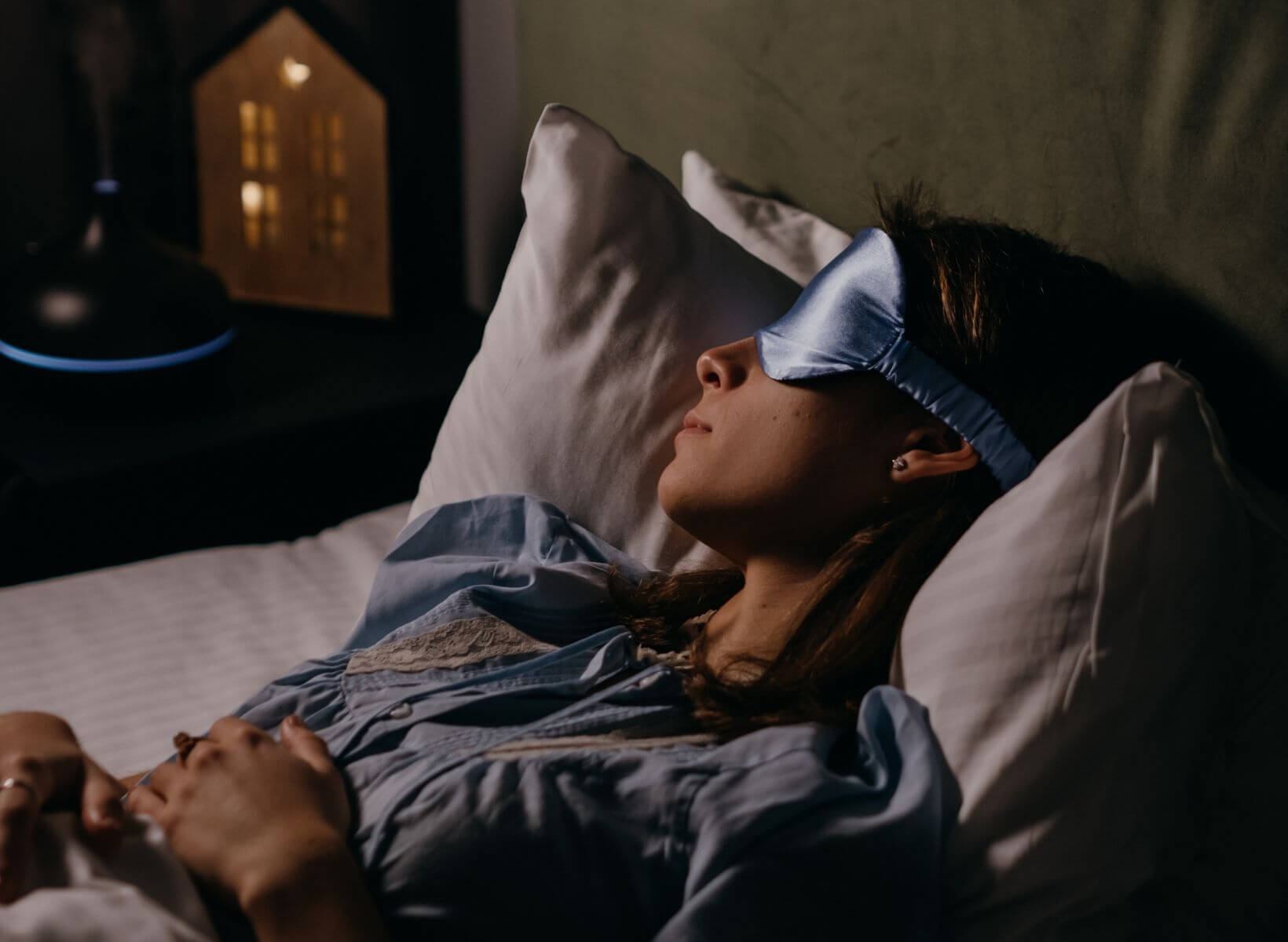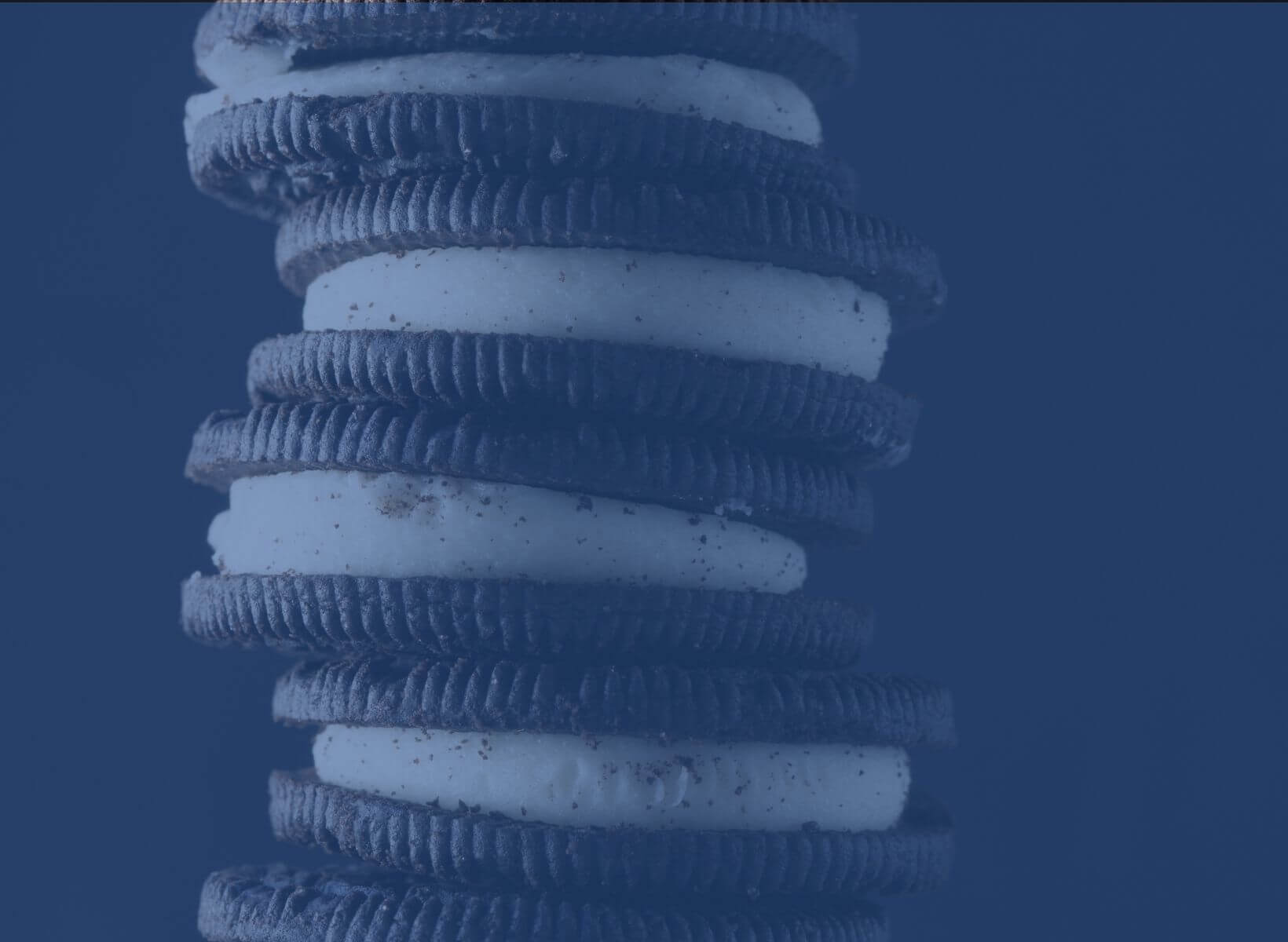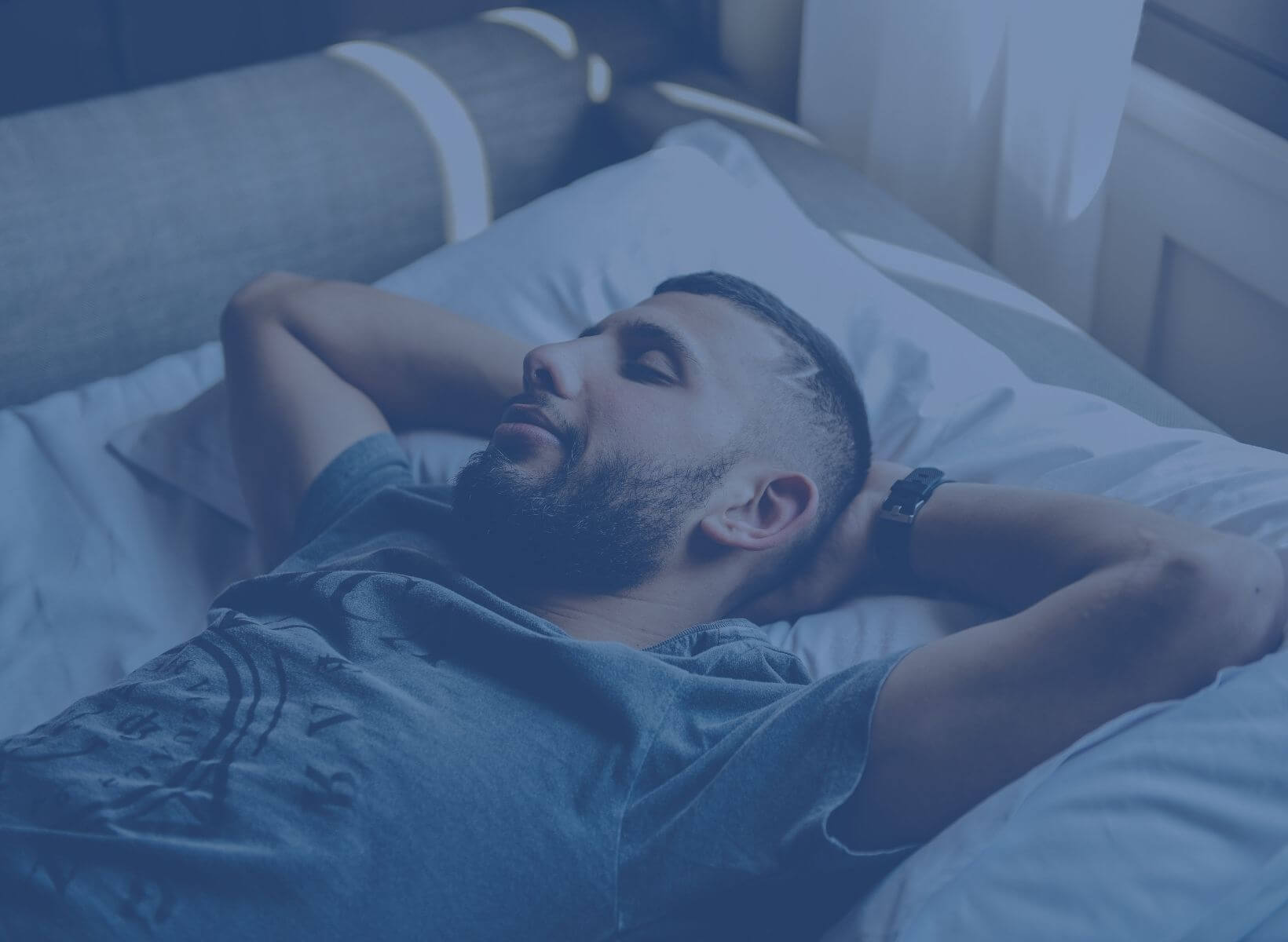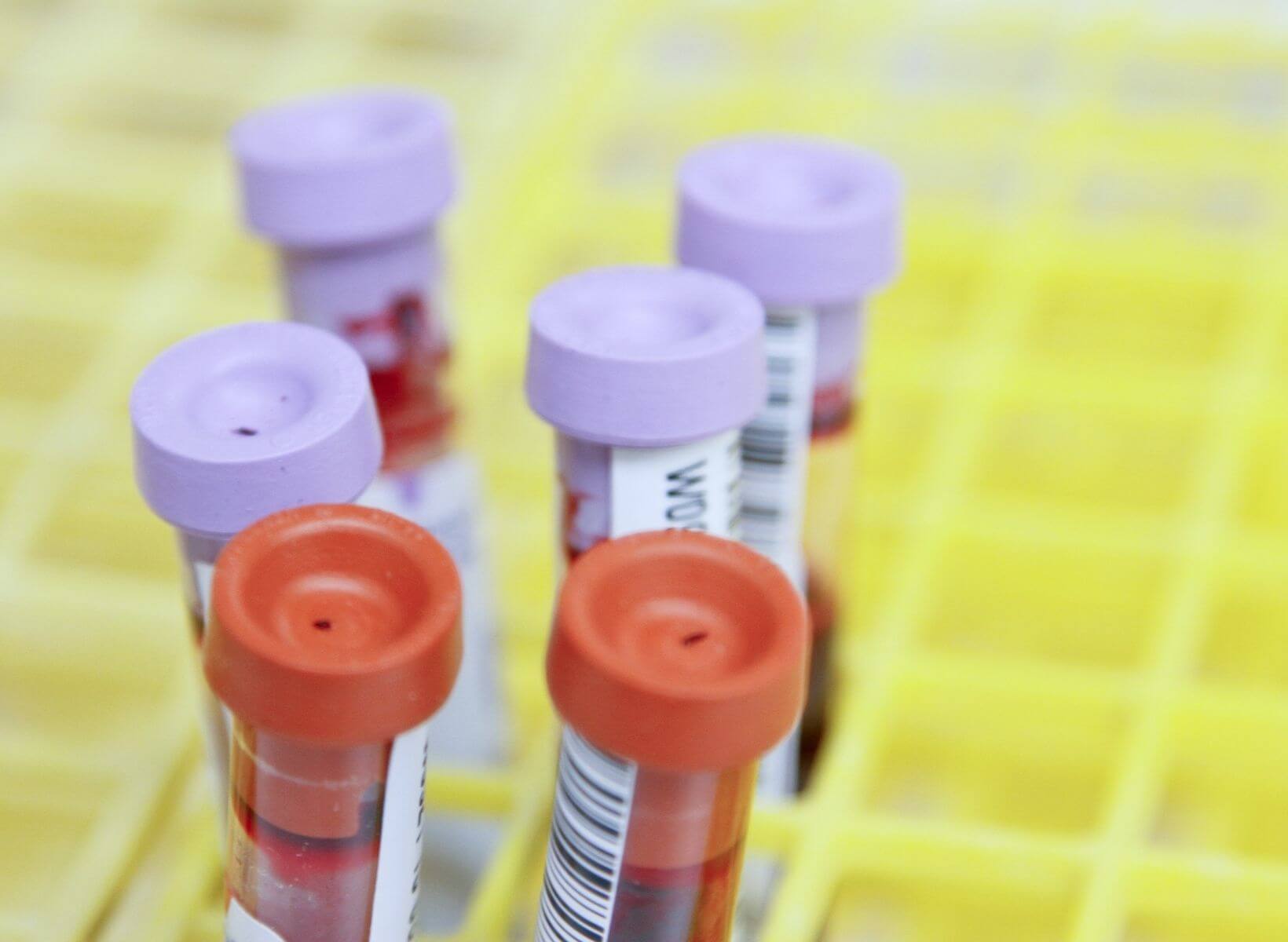You need data. Without getting data from your body, you can't make decisions on what to do to get the best outcomes, like: weight loss, better sleep, stress management, and how to time your exercise for optimal results.
All of these outcomes can be done through tracking your blood sugar. But, I'm not talking about just tracking it just to look at a number. I'm talking about tracking your glucose levels to be able to apply the results to your daily life.
Let's start with weight loss, because I feel like that's the simplest one, right?
CGMs for Weight Loss
Tracking glucose, with a finger prick or continuous glucose monitor, is a powerful thing that you can do for weight loss.
I wear a continuous glucose monitor to watch my glucose in real-time. I can eat something—and within minutes—I can look at my phone to see if I had a glucose spike from what I ate.
But, the cool thing is when my glucose spikes, I can do some light exercise, and watch my glucose levels come down. Being able to have this data as it happens is unbelievably awesome.
<p class="pro-tip">Also Read: The Scientific Evidence for Using CGMs for Weight Loss</p>
Glucose Mirrors Insulin
The glucose in a relatively healthy individual mirrors their insulin<sup>1</sup>. So, if you have a glucose spike or increase, you're usually going to have an insulin spike or increase along with it.
When you look at your glucose readings, you have a perfectly clear window as to what insulin is doing in your body.
Why is this important for weight loss?
Calories still matter. We pay attention to caloric intake, because if you're in a surplus, chances are you will gain weight. But, we also have to look at insulin because when insulin is high, insulin is lipophilic—meaning it encourages the storage of fat—but it also decreases what's called lipolysis.
<p class="pro-tip">When insulin levels are high, fat cells have a hard time being liberated and ultimately broken down and used.</p>
When we see our glucose spike, we can expect an increase in insulin along with this; fat loss is going to be slowed down at that point in time.
Bio Individualism
But where things get really interesting with tracking glucose is we are all having different responses to food; bio individualism.
If I eat a cookie, I may not have a glucose spike, but if you eat that cookie, you may have a glucose spike. By tracking your glucose, you are able to learn which foods do that to you. You learn which foods are more "fat-burning" or more "fat-storing". Right?
With this data, we learn a ton about ourselves.
Long story short, glucose kind of acts as a proxy for insulin. When you see your glucose spike, you can think, "I'm probably not burning fat, so I should go for a walk or a light workout to bring my glucose down.".
Tracking your glucose can help you lose weight because it closely follows insulin levels.
<p class="pro-tip">Also Read: Are CGMs Accurate?</p>
Using a CGM to See Your Risk of Prediabetes and Diabetes
It may not sound exciting, but it's something that's very important to do.
Glucose in the Morning
Your doctor may ask you to take tests to understand your fasting glucose (i.e. glucose in the morning). Here are the categories of fasting blood sugar ranges according to the CDC<sup>2</sup>.
- Normal fasting range: Less than 100 mg/dL
- Prediabetic fasting range: 100 mg/dL - 125 mg/dL
- Diabetic fasting range: 126+ mg/dL
But, getting this read out only in the morning does not give you the full picture of your metabolic health.
When I get up in the morning, my fasting glucose is relatively high; to the point where some doctors would say, "you're getting close to being pre-diabetic". But, since I monitor my glucose throughout the course of the day, I know I'm not pre-diabetic. This is because I know how my glucose responds to food.
Blood Sugar 2 Hours After Eating (Postprandial Glucose)
If you measure your glucose 2 hours after a meal, it will give you a better picture of your glucose response to meals. Here are the categories of postprandial blood sugar ranges:<sup>3</sup>
- Normal Range: Less than 140 mg/dL
- Prediabetic Range: 140 mg/dL - 199 mg/dL
- Diabetic Range: 200+ mg/dL
If my postprandial glucose is stable 2 hours after eating a meal, I am probably not insulin resistant. If my post prandial glucose is 140+ mg/dL, then I might want to determine what foods are triggering that spike, because I might have a degree of insulin resistance.
<p class="pro-tip"><strong>Learn more about </strong><a href="/blog/blood-sugar-bedtime">normal blood sugar levels for people without diabetes</a></p>
Using a CGM to Manage and Track Stress
We know from looking at data that there is a correlation between stress and glucose.
Correlation between cortisol and glucose
There was a study that was published in the journal Psycho Neuro Endocrinology, and it was looking at a longitudinal assessment between glucose and cortisol and kind of how this all worked together. They started with over 6000 participants and after six years they did follow ups with over 2000 participants.
What they found is that there was a correlation between increases in cortisol and glucose. In fact, every 1% annual increase in cortisol directly correlated with an increase in fasting glucose.
Stress causes cortisol to rise and this leads to insulin resistance in diabetics.
They noticed this specifically in type two diabetics and insulin resistant individuals. So people that were responding worse to insulin ended up having a bigger response with stress. It can turn into a vicious circle, a little bit of insulin resistance and a little bit of stress. This compounds the insulin resistance, the fasting glucose is elevated.
Stress management can lower HbA1c levels
A study—published in Diabetologia on metabolic syndrome—looked at 230 individuals with type two diabetes and divided them into two groups. One group was a control group and the other group was a stress management group. The stress management group. They had them go through a series of different stress management protocols. They they had them reduce stress. And it worked. Their perceived levels of stress were significantly lower at the end of the study. But along with that, their levels of HbA1c was lower. HbA1c is essentially a long tail reading of glucose history over a couple of months.
{{mid-cta}}
Stress and Glucose
Stress causes cortisol to rise and results in the liver producing more glucose, muscles releasing more glucose, and less insulin to regulate glucose.
- Increased cortisol lowers the function of insulin—meaning there's less insulin able to do its job and glucose stays elevated.
- Cortisol triggers the liver to produce more glucose through gluconeogenesis.
- Cortisol causes acute spikes in epinephrine. Epinephrine increases the liberation of carbohydrates out of muscles into the bloodstream.
Tracking your glucose can help you monitor your stress levels. When I'm in stressful situations—like, when I go through airport security—I can watch my glucose is going up in real time. I always end up getting patted down. I don't know why, but it always happens to me. It stresses me out.
Using a CGM for Tracking Sleep Quality
This is such a big one because we don't always think about it. If we can use our meters and CGMs to track our glucose, we might be able to know when we're sleep deprived; even if we don't think we are.
Sleep issues are a risk factor for type two diabetes. Only about 12% of people in the United States are in good metabolic health. The average night's sleep right for Americans is 6.8 hours. 100 years ago it was over 9 hours; a two-hour decrease per night in sleep.
Sleep deprivation can cause longer glucose spikes
A study published in The Lancet looked at 11 men; six nights sleep deprived where they only slept for 4 hours and seven nights of 12 hours of sleep<sup>4</sup>.
They ate the same high-carb meals during both phases of the test. On day five of each of these tests, researchers measured the participants’ glucose tolerance. On day six, they measured their glucose levels every 10 to 30 minutes for 24 hours. They found postprandial glucose spikes lasted 40% longer and insulin was 30% less functional during the sleep deprivation phase.
How to use glucose monitoring for sleep optimization
We've all had nights where we felt like we slept well, but maybe our REM sleep was off; maybe our non-REM sleep was off; maybe our slow wave sleep was off. Maybe it was all out of whack. We don't know. We're asleep.
But if you can start tracking your glucose and your diet is pretty strict or pretty clean, you can start backing out the data and seeing when you didn't sleep well; just by looking at your glucose data. It's what I do.
Using a CGM to Time Your Workouts
You can use glucose data to help you time your workouts to get the most out of them. This can help with efficiency and efficacy in terms of fat loss.
Betul Hatipoglu, MD and director for the Obesity and Diabetes Center, suggests that if your glucose levels are relatively high, say, after a meal, and you're diabetic or insulin resistant, you may actually want to wait for your glucose levels to come down before you exercise with any intensity<sup>5</sup>.
Why? Because exercise will actually spike your glucose more because of glycogenolysis. That can make it dangerous for someone that's type two diabetic and actually make your workout feel terrible.
For a healthy individual, you can also benefit from waiting to workout until your glucose is on the downswing. When your glucose is on the downswing, you might be able to get more fat loss out of your workout.
When insulin levels are lower, you have a higher chance of lipolysis, which liberates more fats. This means your workout might yield you more of a fat loss effect.
The Bottom Line
The bottom line is continuous monitoring of your glucose just tells you so much. Try out a continuous glucose monitor. It will change your life. It changed mine.
How to Get a CGM
Signos is an AI-powered app that pairs with a continuous glucose monitor to give you real-time health data. Here's how to get started:
- Pick your plan. Submit answers to a short health quiz.
- Get your kit in the mail, and apply your sensor (it's easy!).
- Download the Signos app and away we go!
<p class="pro-tip">Learn more about how Signos works</p>
- Item 1
- Item 2
- item 3
Topics discussed in this article:
References
- Carbohydrates and Blood Sugar. (2016, July 25). Harvard T.H. Chan School of Public Health. Retrieved March 30, 2022, from https://www.hsph.harvard.edu/nutritionsource/carbohydrates/carbohydrates-and-blood-sugar/
- Diabetes Testing. (2022, March 2). Centers for Disease Control and Prevention. Retrieved March 30, 2022, from https://www.cdc.gov/diabetes/basics/getting-tested.html
- Diabetes.co.uk. (2020, May 1). Blood Sugar Level Ranges. Retrieved March 30, 2022, from https://www.diabetes.co.uk/diabetes_care/blood-sugar-level-ranges.html
- Spiegel, K., Tasali, E., Penev, P., & Cauter, E. V. (2004). Brief Communication: Sleep Curtailment in Healthy Young Men Is Associated with Decreased Leptin Levels, Elevated Ghrelin Levels, and Increased Hunger and Appetite. Annals of Internal Medicine, 141(11), 846. https://doi.org/10.7326/0003-4819-141-11-200412070-00008
- Family Health Team. (2021, August 29). Glucose Control: Why Timing Your Exercise After Meals Matters. Cleveland Clinic. Retrieved March 30, 2022, from https://health.clevelandclinic.org/exercise-and-your-glucose-levels-does-timing-make-a-difference/






























